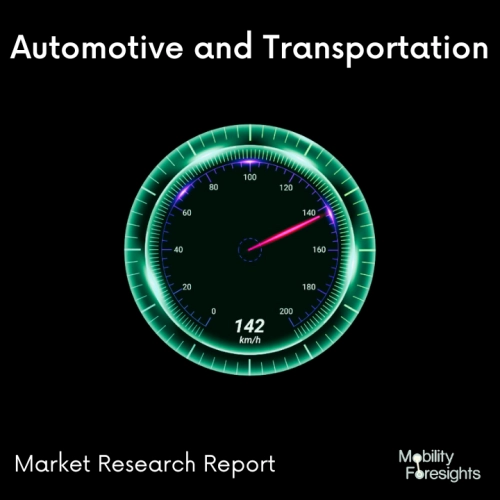
- Get in Touch with Us

Last Updated: Apr 25, 2025 | Study Period: 2024-2030
The technology and mechanisms of a car that is intended to regulate and maintain the interior temperature and comfort level for occupants are referred to as automotive climate control, also known as car climate control or vehicle climate control.
Regardless of the weather outside, it has a variety of features and parts that work together to provide a comfortable environment inside the car.
Among the essential elements and characteristics of automobile climate control systems are:
Heating System: In cold weather, the heating system keeps the interior of the car warm.
A heater core, a blower fan, and engine heat are commonly used to circulate warm air into the cabin.
When it's hot outside, the air conditioning (AC) system cools the inside of the car.
It lowers the interior temperature by absorbing heat from the cabin and releasing it outside through the use of a refrigerant.
Ventilation is the process of bringing fresh air from the exterior of the car into the cabin.
It can aid in defogging windows and reducing stuffiness.
Dual-Zone and Multi-Zone Climate Control: These systems enable the maintenance of various temperature settings in various parts of the car, offering the driver and passengers individualized comfort.
Automatic Climate Control: With this technology, the climate control in the car makes adjustments on its own to keep the inside at a certain temperature.
It may also take into account elements like humidity and solar load.

The Global Automotive Climate Control Market accounted for $XX Billion in 2023 and is anticipated to reach $XX Billion by 2030, registering a CAGR of XX% from 2024 to 2030.
The ID.7 electric saloon will feature a new smart air conditioning system that Volkswagen has shown.
As you get close to the automobile, the climate controls can be automatically activated and will change depending on the weather.
The Volkswagen ID.7 EV has received more information, including a cutting-edge air conditioning system.
According to the firm, the device will be included in the electric saloon and will allow for quicker heating or cooling of the vehicle before departure.
When the car senses a key nearby, the intelligent temperature control kicks in, heating the cabin on chilly days, cooling it in hotter climates, and modifying based on the driver's profile.
| Sl no | Topic |
| 1 | Market Segmentation |
| 2 | Scope of the report |
| 3 | Abbreviations |
| 4 | Research Methodology |
| 5 | Executive Summary |
| 6 | Introduction |
| 7 | Insights from Industry stakeholders |
| 8 | Cost breakdown of Product by sub-components and average profit margin |
| 9 | Disruptive innovation in the Industry |
| 10 | Technology trends in the Industry |
| 11 | Consumer trends in the industry |
| 12 | Recent Production Milestones |
| 13 | Component Manufacturing in US, EU and China |
| 14 | COVID-19 impact on overall market |
| 15 | COVID-19 impact on Production of components |
| 16 | COVID-19 impact on Point of sale |
| 17 | Market Segmentation, Dynamics and Forecast by Geography, 2024-2030 |
| 18 | Market Segmentation, Dynamics and Forecast by Product Type, 2024-2030 |
| 19 | Market Segmentation, Dynamics and Forecast by Application, 2024-2030 |
| 20 | Market Segmentation, Dynamics and Forecast by End use, 2024-2030 |
| 21 | Product installation rate by OEM, 2023 |
| 22 | Incline/Decline in Average B-2-B selling price in past 5 years |
| 23 | Competition from substitute products |
| 24 | Gross margin and average profitability of suppliers |
| 25 | New product development in past 12 months |
| 26 | M&A in past 12 months |
| 27 | Growth strategy of leading players |
| 28 | Market share of vendors, 2023 |
| 29 | Company Profiles |
| 30 | Unmet needs and opportunity for new suppliers |
| 31 | Conclusion |
| 32 | Appendix |